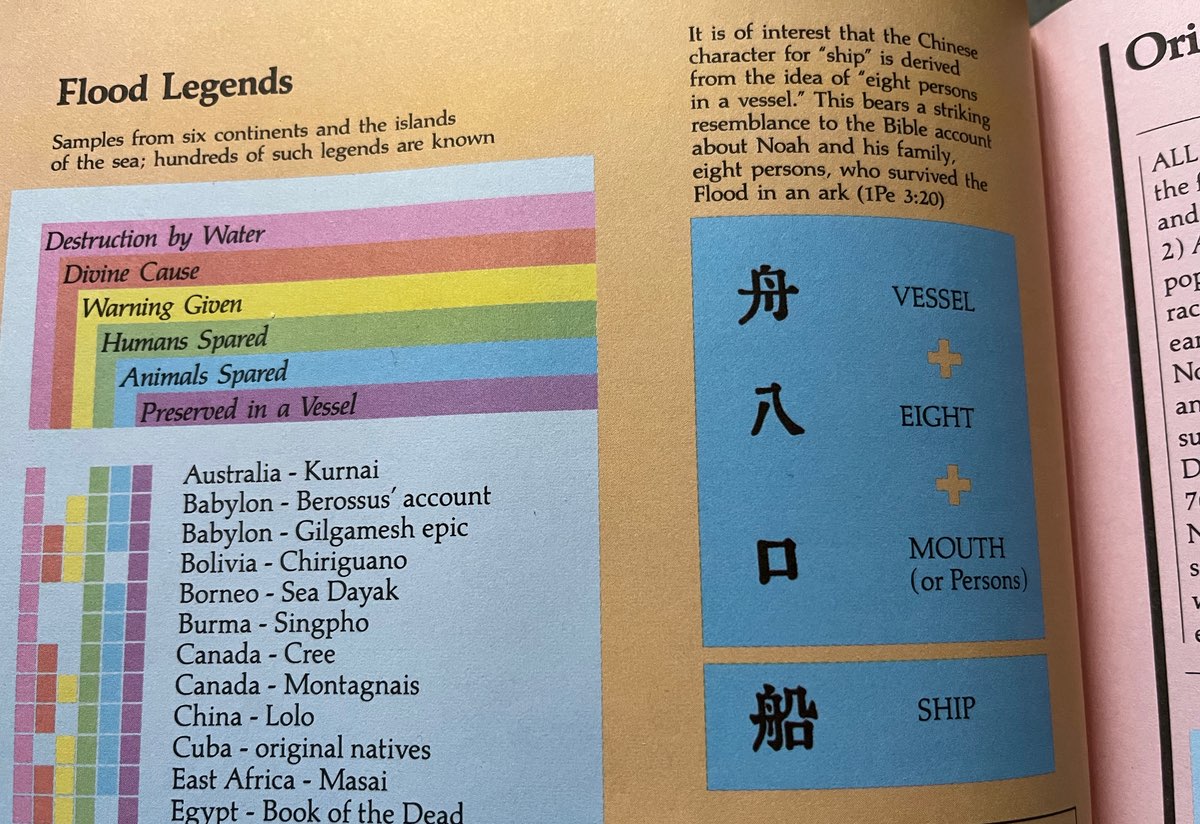chuán (boat; ship; vessel 船 船/舩) ← Tap/click to show/hide the “flashcard”
This week, we are revisiting “chuán (boat; ship; vessel 船 船/舩)”, an expression that was featured in an early Expression of the Week post on the tiandi.info blog. (If you need login information for the parts of tiandi.info that require it, request it by email, and include information on how you learned of tiandi.info and/or what group/cong. you are in.)
As shown in the image below, the first printing of the Insight book (on p. 328 of Volume 1) included a section regarding the Chinese character for “chuán (boat; ship; vessel 船 船/舩)”:

However, this section on this Chinese character no longer appears in current versions of the Insight book. Why might it have been removed?
Murky Speculation
Several years after the above-mentioned tiandi.info post was originally posted, I appended the following update to it:
Note that the section about the Chinese character “船 (chuán)” that was originally in the Insight book, Vol. 1, p. 328 is not present in the more recently published Chinese version of the Insight book.
Perhaps it was eventually decided that the origins of Chinese characters, which have been used for thousands of years, are too murky to do anything more than speculate about. I myself have recently become convinced that Chinese characters in general have been over-glamourized by the world.
It’s also worth going over an interesting, well-researched comment that the tiandi.info post mentioned above received. (Thanks again, Ed!) Here are a couple of excerpts from it:
The Insight article isn’t the only place in the Slave’s writings that the reference to this Chinese character appears. It originally appeared in the article “Chinese Characters—Why Are They Written That Way?” in g84 8/8 p. 23 [Here is a link to that article. Note that in addition to mentioning “chuán (boat; ship; vessel 船 船/舩)”, this old article unfortunately repeats the Ideographic Myth. Also, it conflates language with writing, when actually, linguists understand that language primarily has to do with speech.—ed.], which ended with the caveat, “The similarity between the thoughts behind many of the Chinese characters and the Bible record of man’s early history is nothing less than remarkable. Although the evidence is only circumstantial, it is, nonetheless, fascinating to think that there is a possibility that the Chinese [characters contain Biblical concepts].”
The article was written in response to the book The Discovery of Genesis: How the Truths of Genesis Were Found Hidden in the Chinese Language, which had been published only a few years earlier. This book is full of fascinating parallels between Biblical accounts and elements that appear to comprise certain Chinese characters.
There are many resources available these days even to English speakers that contain scholarly research into the meaning and origins of Chinese characters. During the course of learning the language, I have made it a hobby to investigate some of these. I have to say that, based on what I have discovered, I disagree with the coauthors of Discovery of Genesis. In fact, there is a web site that has existed for several years for the purpose of rebutting these claims. While I don’t know the author’s motive for putting up the page, it does seem to have logical arguments.
…
For an alternative to Zhongwen.com, you could try looking up 船 at this site. (Disclosure: this web site is run by me.)
Truly right-hearted people won’t be stumbled if we share accurate knowledge from the Bible with them. But in any case, it’s best not to get too involved with matters of speculation that could be of interest to us but not have a direct bearing on God’s word of truth.
Sound vs. Meaning
The Raccoon Bend website page mentioned in the above quote contains some technical points such as the following:
A typical error made…is to analyze a semantic-phonetic compound as though it were compound-indicative (which they refer to as “ideographic”).
In other words, some mistakenly treat a character component that indicates sound as if it indicates meaning. The information at the Chinese-Characters.org link that the brother quoted above provided indicates that doing that with “船” seems to be what led to the story of “vessel + eight + mouths/persons”, when this character should actually be understood as being made up of the components “vessel + [phonetic (sound) component]”.
Stories vs. the Truth
As humans, we naturally love stories, since our minds use stories to make sense of the world around us. Also, stories add or reveal meaning or significance regarding things that these things would lack if they were not part of a story. However, not all stories are true. And while even fictional stories can help to reveal deeper truths about life, like Jesus’ parables did, false stories can take us farther away from the truth, if we let them. As the apostle Paul warned in 2 Timothy 4:3, 4:
For there will be a period of time when they will not put up with the wholesome teaching, but according to their own desires, they will surround themselves with teachers to have their ears tickled. They will turn away from listening to the truth and give attention to false stories.
While Chinese characters sometimes have appealing stories attached to them, let us make sure that we don’t let mere love of a good story take us away from the truth in any way. While naive tourists may be easily misled by appealing but false stories, as literal or figurative missionaries in the Mandarin field, we have a responsibility to serve God and our Mandarin-speaking neighbours “with spirit and truth”.—John 4:23, 24.